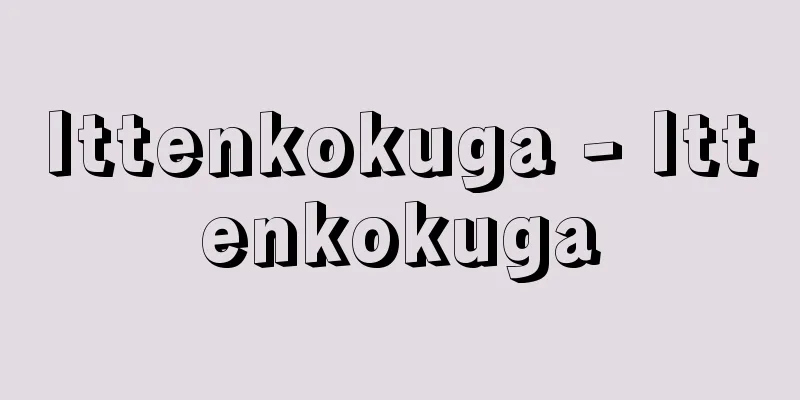Deposit -

|
This refers to money or other valuables given by one party to the other when concluding a contract for sale or other compensation. In practice, it is often the delivery of money, and is also called a deposit, earnest money, advance payment, etc. There are two types of deposits: a termination deposit, which the contracting parties use to reserve the right to terminate the contract, and a penalty deposit, which is forfeited in the event of a breach of contract, in preparation for default on the obligation. These deposits are recognized as having the effect of proving that a contract has been formed between the parties (deposit for proof). The Civil Code presumes that, in principle, they are termination deposits unless there is a special agreement (Article 557, Paragraph 1). In contrast to a deposit, there is a down payment. A down payment is a payment that does not pay the full amount of a monetary debt, but only a portion of it. Paying a down payment at least serves as evidence that a contract has been formed, so it has the same effect as a deposit for guarantee, but unlike a cancellation deposit, it does not carry the right of cancellation. The decision as to whether it is a down payment or a deposit must be made from the overall intent of the contract, regardless of the wording used. With a cancellation deposit, the person who has paid the deposit can cancel the contract by abandoning it. On the other hand, the person who has received the deposit can cancel the contract by paying back double the amount of the deposit. However, this cancellation must be made before one of the parties begins to perform the contract. If the contract is not canceled and the performance is completed, the deposit will be returned. However, if the deposit and the thing to be paid as the performance of the debt have the same nature, it is often used as part of the payment as is. [Toshio Takeuchi] [Reference item] | | |Source: Shogakukan Encyclopedia Nipponica About Encyclopedia Nipponica Information | Legend |
|
売買その他の有償契約の締結の際に、当事者の一方から他方に対して交付される金銭その他の有価物をいう。実際上は、金銭交付の場合が多く、手金、手付金、前渡金などといわれることもある。手付には、契約当事者が解除権を留保するための解約手付と、債務不履行に備えて、違約したときには没収される違約手付とがある。そして、これらの手付には、当事者間で契約が成立したことを証する効力が認められる(証約手付)。民法は、特約がない限り原則として解約手付と推定している(557条1項)。 手付と対比されるものとして、内金(うちきん)が存する。内金とは、金銭債務の全額を弁済せずに、その一部のみを弁済としてなす給付である。内金を入れることは、少なくとも契約が成立した証拠となるから、証約手付と同様の作用をもつが、解約手付のように解除権を有するものではない。内金か手付かの判断は、使用されている文言にとらわれることなしに、契約の全趣旨から判断されなければならない。解約手付では、手付を交付した者は、それを放棄して、解除をなすことができる。一方、手付を受け取っている者も、その手付の倍額を償還して、解除をすることができる。もっとも、この解除は、当事者の一方が契約の履行に着手するまでに、なされなければならない。なお、契約が解除されることなく、履行が終了すれば、手付は返還されることとなる。ただ、手付と債務の履行として給付されるべきものが、同一の性質を有する場合には、そのまま弁済の一部に充当されることが多い。 [竹内俊雄] [参照項目] | | |出典 小学館 日本大百科全書(ニッポニカ)日本大百科全書(ニッポニカ)について 情報 | 凡例 |
>>: Iron Carbonyl - Tescarbonyl
Recommend
Recco, G. (English spelling) ReccoG
...1612-75), and Rosa, who pioneered romantic lan...
Santa Clara (English spelling)
An inland city in the center of Cuba, it is the ca...
Aloha State
The islands, blessed with a mild climate all year...
Balbo - Cesare Balbo
Italian historian and politician. Born into a fam...
Traetta, T. (English spelling)
… In the 1730s, music began to be directly import...
Large-leaved willow (Oobayanagi) - Oobayanagi (English spelling) Toisusu urbaniana (Seemen) Kimura
A deciduous tall tree of the Salicaceae family tha...
Bodhisattva mask
A type of procession mask. The Japanese Bugaku Bod...
Fetal placental function test
A test to examine the vitality of the fetus and th...
Pansophia (Latin)
A northern spiritual movement that emerged during ...
opisthodomos
…It is often used synonymously with the Greek wor...
Sankyoronkou (English: Three Teachings Discussion)
A dispute over doctrine or rituals that took place...
Rashamen
A derogatory term for Japanese women who became co...
Canada (English spelling)
A country occupying the northern part of the North...
Nash, John
Born June 13, 1928 in Bluefield, West Virginia [Di...
Kitano Tenmangu Shrine - Kitano Tenmangu Shrine
...It is located in Bakuro-cho, Kamigyo-ku, Kyoto...








![Kawaguchi [town] - Kawaguchi](/upload/images/67cb460697a61.webp)
